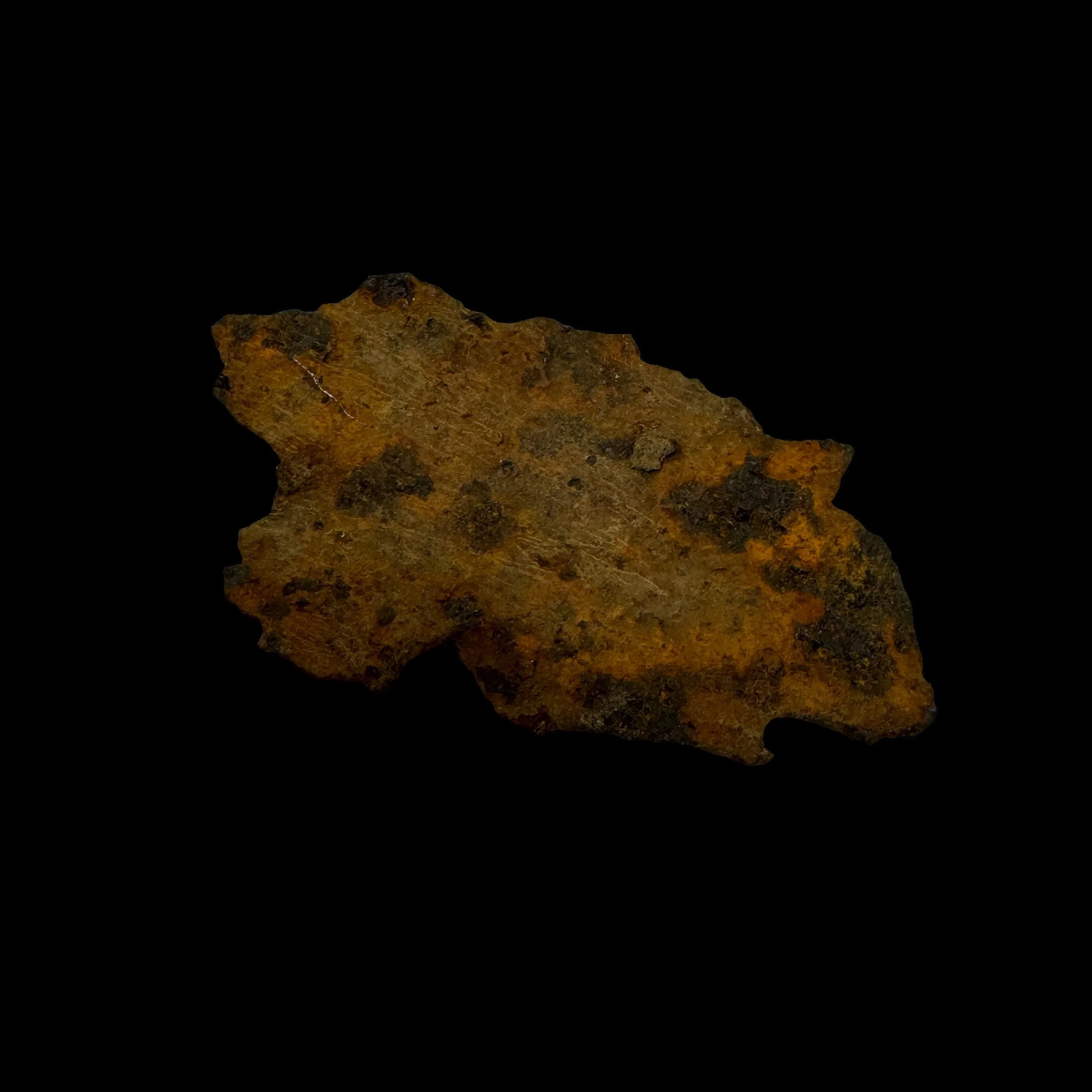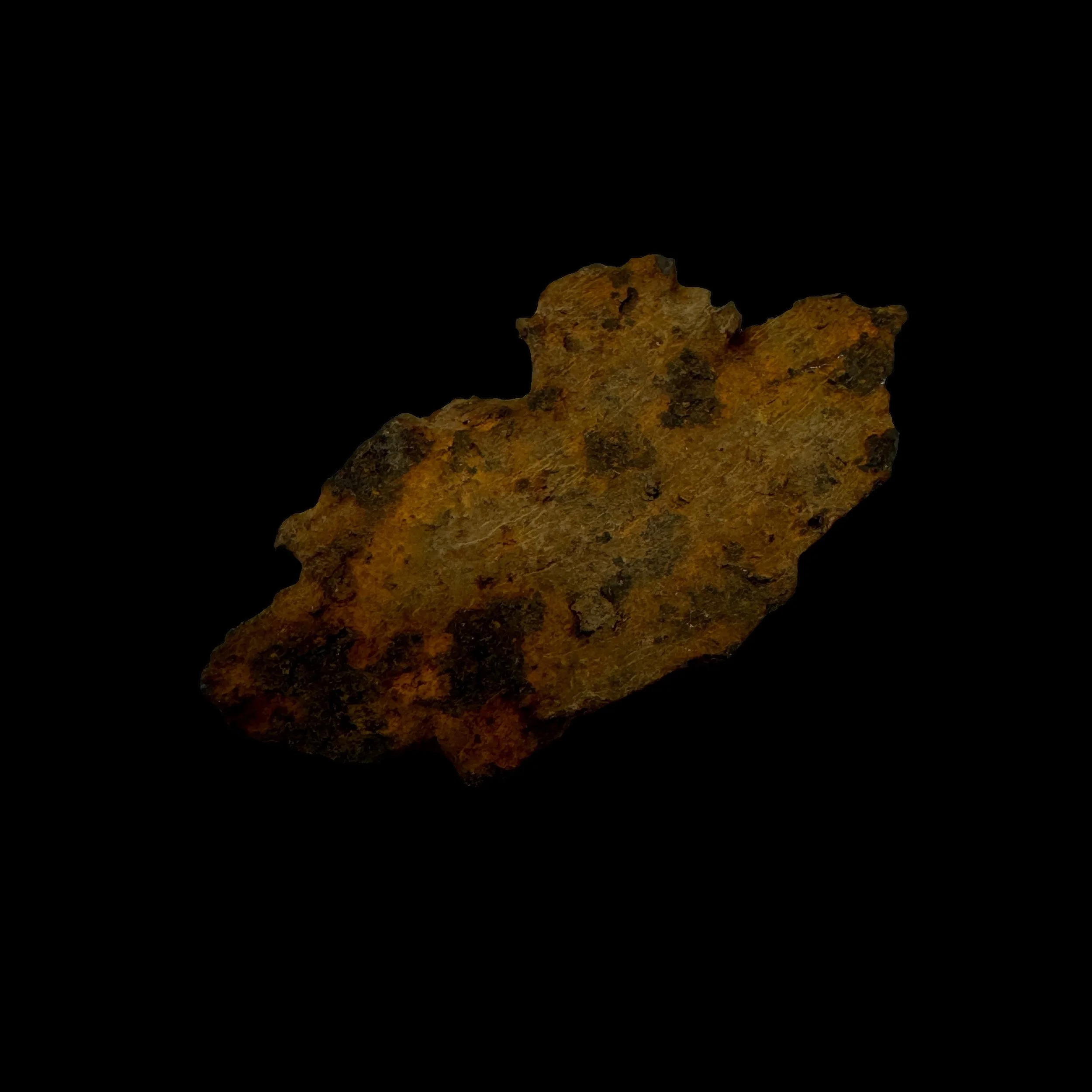RARE! WWI 1918 Meuse-Argonne Offensive Battlefield Excavated EXPLODED Artillery Shrapnel











RARE! WWI 1918 Meuse-Argonne Offensive Battlefield Excavated EXPLODED Artillery Shrapnel
Comes with a hand-signed C.O.A.
Size: 2.5 inches
This rare and museum-grade WWI exploded artillery shrapnel fragment was professionally preserved from the Meuse-Argonne battlefield. The Meuse-Argonne Offensive, waged from September 26 to November 11, 1918, stands as one of the most significant and grueling campaigns of World War I. This operation was a major component of the broader Allied offensive, known as the Hundred Days Offensive, which ultimately led to the end of the war. With over a million American soldiers participating, the Meuse-Argonne Offensive was a critical effort in breaking the German defenses on the Western Front. The use of artillery, particularly the deployment of shrapnel, played a vital role in this campaign, shaping the battlefield and influencing the course of the conflict.
Strategic Importance and Preparation
By mid-1918, the Western Front had become a brutal and seemingly impenetrable stalemate, defined by extensive trench networks, barbed wire, and heavily fortified positions. The failure of the German Spring Offensive earlier in the year left the German Army overextended and vulnerable. The Allied forces, bolstered by fresh American troops, saw an opportunity to launch a decisive counteroffensive.
The Meuse-Argonne region in northeastern France was chosen for its strategic importance. The area was a critical junction for German supply lines and communication networks. Capturing it would disrupt the German ability to sustain their front-line troops and would pave the way for further advances into German-held territory. The terrain, however, was exceptionally challenging, characterized by dense forests, rugged hills, and limited infrastructure, all of which would complicate the assault.
Artillery and the Use of Shrapnel
Artillery was the dominant force on World War I battlefields, accounting for the majority of casualties. The Meuse-Argonne Offensive was no exception, with both sides relying heavily on artillery barrages to support their operations. Artillery was used to destroy enemy fortifications, cut through barbed wire, and provide covering fire for advancing infantry.
A particularly lethal type of artillery ammunition was shrapnel. Named after its inventor, British Army officer Henry Shrapnel, this ammunition was designed to maximize anti-personnel damage. Shrapnel shells were filled with numerous lead or steel balls and a small explosive charge. When the shell exploded, it would scatter the balls over a wide area, creating a deadly hail of projectiles capable of inflicting severe injuries and death over a broad zone.
In the context of the Meuse-Argonne Offensive, shrapnel was used extensively to target enemy infantry positions, trenches, and machine gun nests. The goal was to create gaps in the German defenses and reduce their ability to resist the American advance. The preparatory artillery bombardment, which began on September 26, was one of the largest of the war. It aimed to obliterate German fortifications, cut through barbed wire defenses, and inflict heavy casualties on the defenders.
The Battle Begins
The initial phase of the Meuse-Argonne Offensive saw American forces, under the command of General John J. Pershing, launching a massive assault along a 24-mile front. The preparatory bombardment, which lasted for several hours, was intended to soften up German defenses. Despite the intensity of the artillery fire, the German positions were well-prepared and heavily fortified, making the American advance slow and costly.
The dense forests and rugged terrain of the Argonne region added to the difficulties faced by the attackers. Navigating through the undergrowth while under fire was a formidable challenge. Furthermore, the German defenses were deeply entrenched, with multiple lines of trenches and fortified positions protected by barbed wire and machine guns.
Artillery played a crucial role in attempting to overcome these obstacles. American gunners worked tirelessly to provide continuous fire support, targeting known enemy positions and responding to calls for fire from advancing infantry units. However, the effectiveness of artillery was often hampered by poor visibility, communication breakdowns, and the inherent difficulties of coordinating fire support in such challenging terrain.
The Impact of Shrapnel on the Battlefield
The use of shrapnel during the Meuse-Argonne Offensive had a profound impact on the battlefield. The widespread deployment of shrapnel shells created a lethal environment for German defenders. Trenches, which had previously provided some measure of protection against traditional artillery shells, offered little shelter from the deadly spray of shrapnel balls. The psychological impact on soldiers, knowing that no part of the battlefield was truly safe, was significant.
Shrapnel was particularly effective in targeting concentrations of enemy troops and disrupting their defensive preparations. Machine gun nests, which were a major obstacle to the American advance, were often heavily targeted by shrapnel barrages. The intense bombardment forced the German machine gunners to seek cover, reducing the volume and accuracy of their fire, and allowing American infantry to advance.
Despite the advantages offered by shrapnel, its use also came with significant challenges. The dense forests of the Argonne region meant that many shrapnel shells exploded in the tree canopy, reducing their effectiveness against entrenched positions. Moreover, the coordination required to effectively use artillery in support of infantry operations was complex, and communication issues often led to delays and misfires.
Overcoming the German Defenses
The initial days of the offensive were marked by intense fighting and heavy casualties. The American forces faced stiff resistance from well-entrenched German troops. The use of artillery, including shrapnel, was crucial in gradually wearing down the German defenses. Key battles, such as the capture of Montfaucon, a heavily fortified German position, demonstrated the critical role of artillery in supporting infantry advances.
As the offensive progressed, American forces adapted their tactics to the challenging conditions. Engineers and specialized units worked to clear paths through barbed wire and minefields, while artillery units continued to provide crucial fire support. The relentless pressure applied by the Americans, combined with the deteriorating state of the German army, eventually led to significant breakthroughs.
By late October, the American forces had made substantial gains, capturing key positions and advancing several miles into German-held territory. The cumulative effect of continuous artillery bombardments, including the extensive use of shrapnel, had taken a heavy toll on the German defenders. The disruption of German supply lines and communication networks further weakened their ability to resist.
The Offensive's Outcome and Legacy
The Meuse-Argonne Offensive was a decisive factor in the final collapse of the German military. By November 1918, the German High Command recognized that the war was lost, leading to the signing of the armistice on November 11. The offensive achieved its strategic objectives, breaking through the Hindenburg Line and forcing Germany to seek peace.
The campaign came at a tremendous cost. American forces suffered over 26,000 killed and around 95,000 wounded, making it one of the deadliest battles in U.S. history. The extensive use of artillery, particularly shrapnel, contributed significantly to these high casualty rates. The brutal nature of the fighting, characterized by relentless artillery bombardments and close-quarters combat, underscored the harsh realities of World War I trench warfare.
The Meuse-Argonne Offensive demonstrated the critical importance of coordinated combined arms tactics, including the integration of infantry, artillery, tanks, and air support. It also highlighted the challenges of overcoming well-prepared defensive positions, a lesson that would influence military strategy in future conflicts.
In retrospect, the Meuse-Argonne Offensive stands as a testament to the resilience and bravery of the soldiers who fought there. It marked the culmination of America's involvement in World War I and played a key role in shaping the post-war world. The campaign's legacy continues to be studied by military historians and serves as a poignant reminder of the sacrifices made during the Great War.